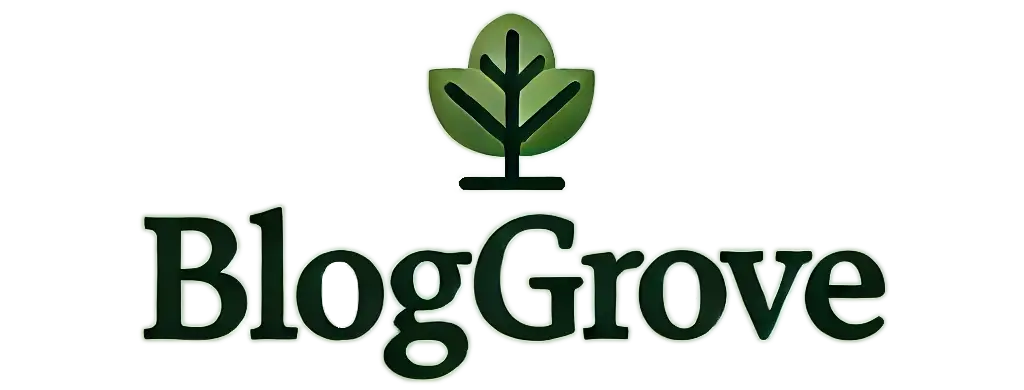Do you dream of having a thriving garden while living in a tiny apartment? You’re not alone. My journey began when I found the enchanting world of terrarium plants.
These miniature ecosystems serve as more than just trendy decorations. Plant lovers can bring nature indoors without sacrificing space. The right plant selection plays a crucial role, whether you’re building your first closed terrarium or enhancing your existing one.
My years of experiments with different varieties have taught me valuable lessons. Some plants simply don’t adapt to these glass habitats. This carefully curated list features 10 terrarium plants that will thrive in contained environments. These tiny green wonders can reshape any corner of your home into a lush miniature paradise.
Table of Contents
Miniature Fittonia (Nerve Plant)
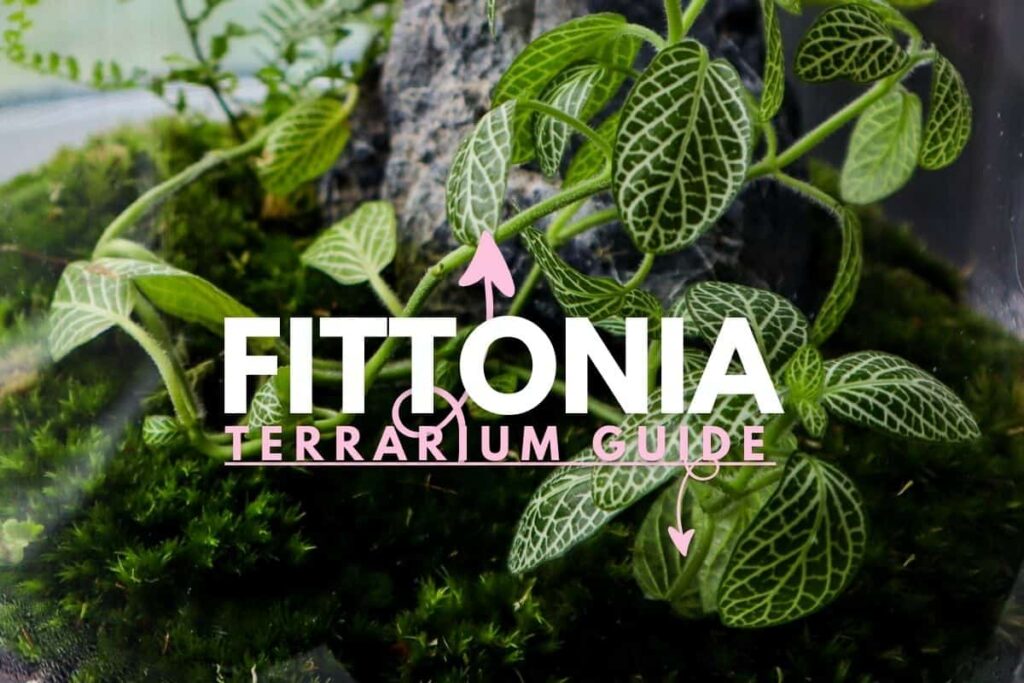
My first encounter with Miniature Fittonia left me amazed by its intricate leaf patterns. This stunning tropical beauty, also called the Nerve Plant, grows just 3-6 inches tall 1. Its small size makes it perfect for terrariums.
Fittonia’s showstopping foliage sets it apart from other plants. The leaves showcase striking veins that create a mesmerizing contrast against their deep green background. My terrarium experience has introduced me to several beautiful varieties:
- White-veined (classic silvery patterns)
- Pink-veined (for a soft, romantic touch)
- Red-veined (adds dramatic flair)
Fittonia runs on conditions that mirror its natural rainforest habitat. The plant needs high humidity levels between 60-90% 1, which makes it a perfect match for closed terrariums. These plants thrive in bright, indirect light, just as they would on the forest floor 2.
Fittonia’s compact growth habit makes it even more appealing. Most terrarium plants can quickly outgrow their space, but this little beauty maintains a manageable size and creates a lush, dense carpet effect. The plant shows its dramatic side especially when you have moisture issues – it will faint! A quick watering brings it back to life quickly.
The plant needs well-draining soil that retains some moisture to thrive in your terrarium. Room temperatures between 60-80°F 1 suit it perfectly, making it ideal for indoor environments. Proper care transforms this plant into a stunning centerpiece in any terrarium setup.
Baby Tears Plant
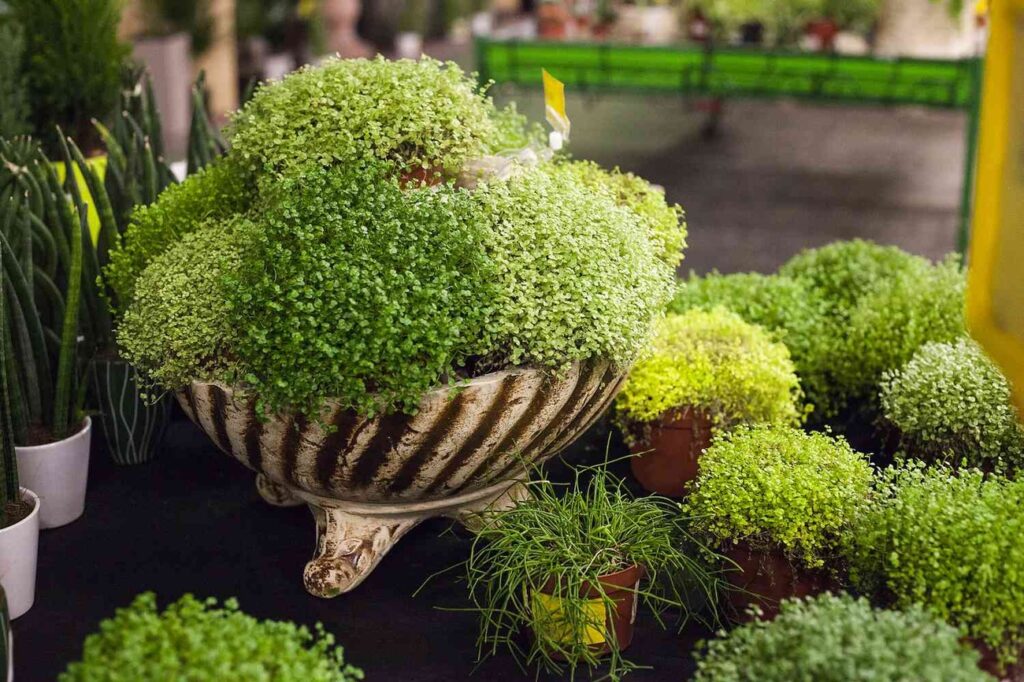
My Baby Tears plant looks like a miniature emerald carpet. Its countless tiny leaves create a dense, moss-like appearance. This delicate beauty has become one of my favorite terrarium plants, and with good reason too.
Baby Tears (Soleirolia soleirolii) comes from the Mediterranean region and creates a lush mat of fine round leaves on short, fleshy stems 3. The plant’s versatility amazes me – it spreads beautifully in a terrarium yet stays perfectly manageable.
My experience shows Baby Tears runs on these specific conditions:
- Consistent temperature between 50-70°F 3
- High humidity level of at least 75% 3
- Bright, filtered light to prevent leaf scorching 3
- Rich, well-draining soil with regular moisture 3
Baby Tears fits perfectly in closed terrariums that naturally create its needed humid environment. The plant creates stunning cascading effects in my terrariums and forms a perfect ground cover by spilling over the edges.
The plant’s easy propagation adds to its appeal. My collection has grown through both division and stem cuttings. The stems take root wherever they touch soil 4, which makes propagation enjoyable. Just remember to keep proper humidity during the rooting process – my first few attempts failed because conditions were too dry.
Pro tip: A dramatically wilting Baby Tears shouldn’t cause alarm! A quick watering usually revives it 3. Just make sure the roots don’t sit in water to avoid rot.
Peperomia Hope
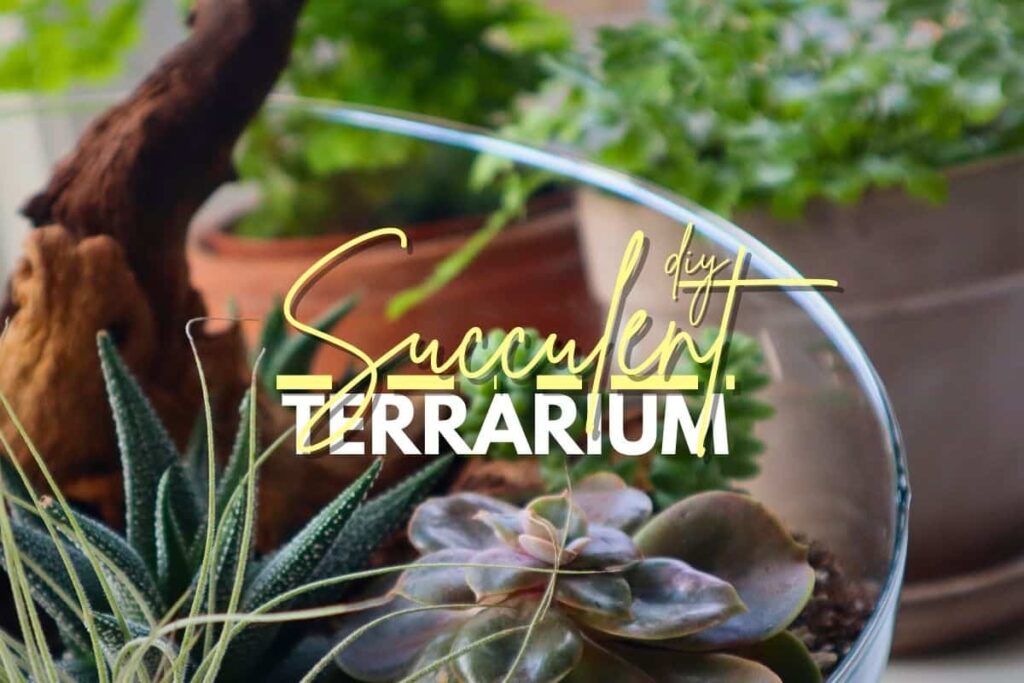
Image Source: Terrarium Tribe
Peperomia Hope is a true gem in my terrarium garden. Its trailing stems and succulent-like leaves create a mesmerizing cascade effect. This hybrid beauty has become my favorite choice to add depth and texture to closed terrariums.
The plant’s adaptability amazes me. It runs on temperatures between 65-75°F (18-24°C) 5 and stays quite forgiving when conditions aren’t perfect. The thick, water-storing leaves help it survive occasional neglect, which makes it perfect for busy plant parents.
These are the quickest ways I keep my terrarium healthy:
- Bright, indirect light – avoid direct sunlight to prevent leaf scorching
- Well-draining soil mixture with peat moss and perlite
- Allow top inch of soil to dry between waterings
- Maintain humidity levels between 60-80% 6
The sort of thing I love about this plant is its unique watering needs. Peperomia Hope works like the camel of terrarium plants – its succulent-like leaves store water efficiently 7. This feature makes it ideal for closed terrariums where moisture levels can be tricky to balance.
My experience shows this plant’s incredible versatility. It maintains a compact growth of 8-12 inches in height 5 whether cascading from a hanging terrarium or creeping across the ground layer. Mine creates stunning displays as it spreads up to 18-24 inches 5 and fills empty spaces with its charming round leaves.
Pro tip: Humidity boosts propagation success rates. Just cover your cuttings with a clear plastic bag to create the perfect environment for root development 8.
Club Moss
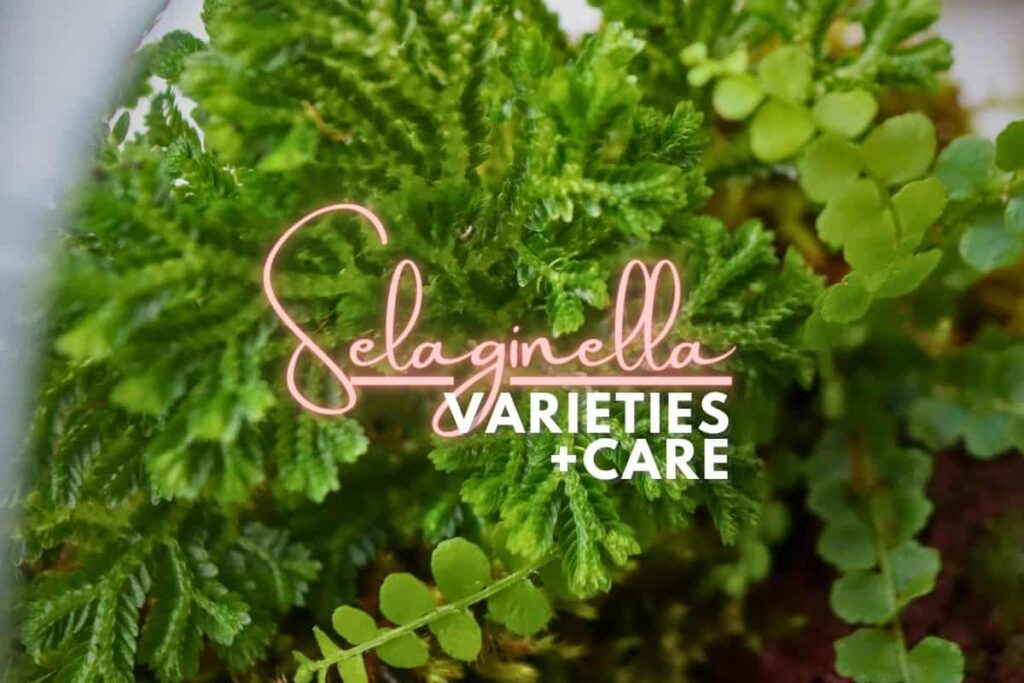
Image Source: Terrarium Tribe
Club Moss has become my secret weapon to create stunning terrarium landscapes, despite its misleading name. This fascinating plant isn’t actually a moss at all. It’s a prehistoric-looking beauty that creates a dense, fern-like carpet perfect for any terrarium setup.
The sort of thing I love about Club Moss (Selaginella kraussiana) is its versatility to create depth and height in terrariums 9. Unlike true mosses, it develops a proper stem and root system that offers unique design possibilities other ground covers simply can’t match.
During my terrarium-building trip, I found that Club Moss runs on these specific conditions:
- Medium indirect light to prevent leaf damage
- Consistently moist environment (humidity 50-90%) 10
- Temperature range of 50-75°F 11
- Acidic to neutral well-draining substrate 9
My most rewarding experience is its quick growth rate – it forms a thick carpet faster once it’s a few weeks old 10. I’ve learned to keep an eye on its spreading tendency. This makes it excellent for coverage, but occasional trimming helps maintain the desired shape and prevents it from overwhelming smaller terrarium companions.
Pro tip: Club Moss will signal when it needs more moisture by turning brown and then red 9. This early warning system helps me maintain the perfect moisture balance in my terrariums.
Mini Orchids
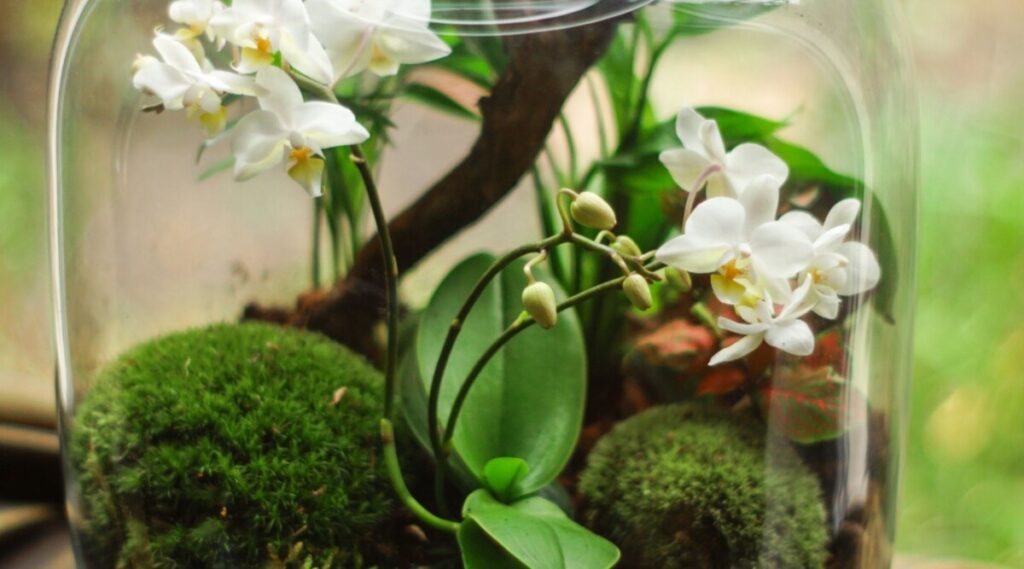
I fell in love with mini orchids after I found they could turn a simple terrarium into a tropical paradise. These tiny beauties are now my favorite closed terrarium plants. They give you all the elegance of their larger cousins in a perfectly compact package.
My experiments show mini orchids run on humidity levels between 50-70% 12. This makes them perfect for enclosed terrariums. My setups stay between 65-85°F 13, which matches their natural habitat perfectly.
Here are the varieties that worked best in my terrariums:
- Dwarf Phalaenopsis – Perfect for beginners, blooming for up to three months 14
- Masdevallia – Thrives in 80-100% humidity 15
- Jewel Orchids – Easiest choice for small closed terrariums 16
Mini orchids’ adaptability to mounted growing amazes me. Mounting them with roots in long-fiber sphagnum moss 17 works great and helps keep moisture levels steady. The fertilizing rule is simple – half-strength orchid fertilizer every two weeks 12.
Proper lighting is a vital lesson from my experience. These beauties need bright light, but I keep them at least 12 inches away from LED or fluorescent light sources 17 to avoid leaf burn. East-facing positions in my terrariums provide the perfect balance of light without too much heat.
Pro tip: Good air circulation is essential in orchid terrariums. They love humidity, but stagnant air can hurt the roots. A small fan or some well-placed ventilation holes work wonders in my setups.
Air Plants (Tillandsia)
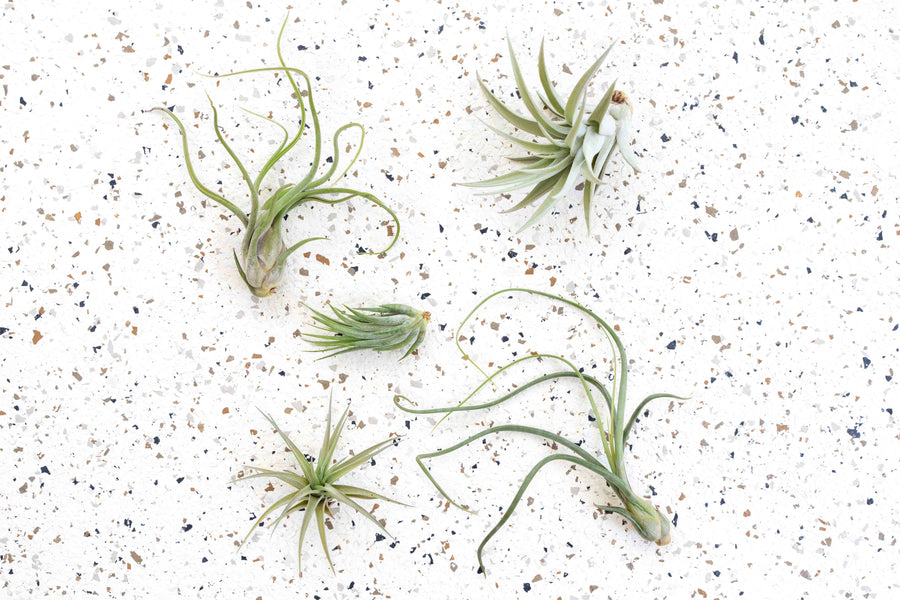
Image Source: Air Plant City
Air plants have been a game-changer in my terrarium journey. These amazing Tillandsia plants have reshaped the scene of how I look at terrarium plants. The best part? They don’t even need soil to grow!
My air plants thrive in terrariums with the right care. They love temperatures between 50-90°F 18, which makes them perfect indoor companions. Success comes from a simple weekly ritual – I soak them for 20-30 minutes 19 and let them dry completely to stay healthy.
My experiments helped me find these beautiful varieties that work great in terrariums:
- Ionantha – Small, easy to care for, and perfect for beginners 20
- Fuchsii – Spiky appearance, ideal for sand-based displays 20
- Funckiana – Resembles pine branches, adds unique texture 20
- Bulbosa – Creates an interesting sea creature effect 20
The sort of thing I love about air plants is their special way of drinking water. They enjoy humid spots, but I take them out to water them and put them back only after they’re completely dry 21. This simple step helps avoid rot issues that new growers often face.
Bright, indirect sunlight works best for my air plant terrariums 18. Direct light can work briefly, but too much quickly dries them out 18. My setup ensures good airflow while keeping these tropical beauties in their preferred humid environment.
African Violet Mini
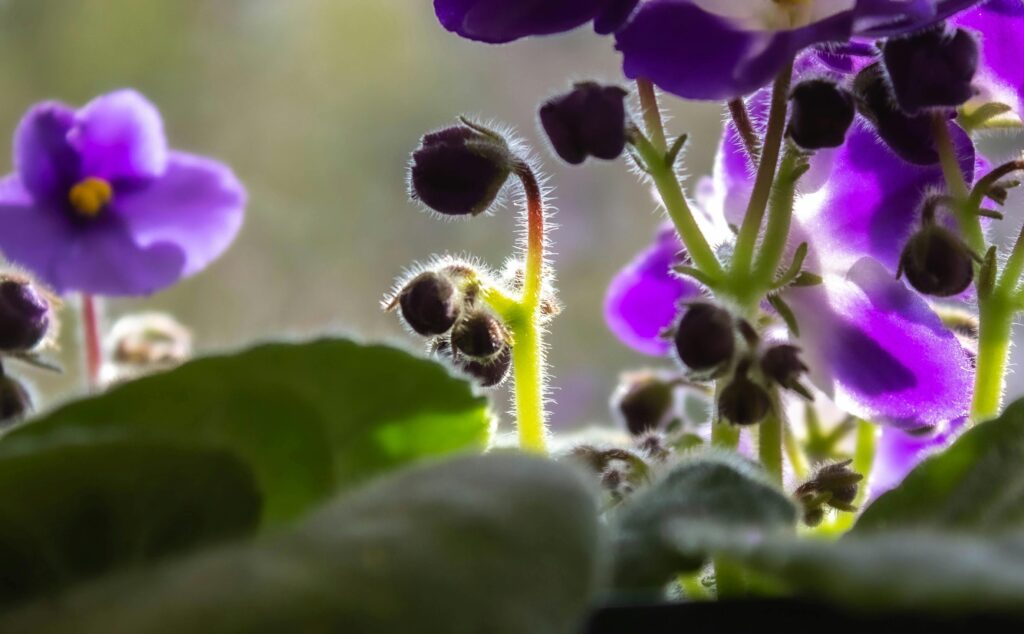
Mini African violets have become my latest terrarium obsession with their delicate charm. These tiny treasures fit all the beauty of standard African violets into a compact package, growing just 3-6 inches wide 22.
The sort of thing I love about these miniature varieties is their amazing ability to bloom. They can flower almost year-round in the right conditions, blooming for 10-12 months 22 and creating a beautiful display in closed terrariums.
My experience shows that mini African violets need specific care in terrariums:
- The temperature should stay between 60-80°F 22
- They need at least 10 hours of bright, indirect sunlight each day 22
- Humidity works best between 50-60% 22
- Water them only when the top ½ inch of soil feels dry 22
My experiments taught me that proper drainage is significant to succeed with terrariums. A layer of gravel at the bottom, fine mesh, and fast-draining soil 23 prevents root rot in enclosed spaces.
These small plants thrive when they’re slightly root-bound 24, which I find fascinating. My terrariums use pots about a third of the plant’s leaf spread diameter 24, and this setup encourages more blooms.
Pro tip: Remove spent blooms right away to prevent rot in the humid terrarium environment 25. This simple task has made a huge difference in my violet’s health and longevity.
Polka Dot Plant
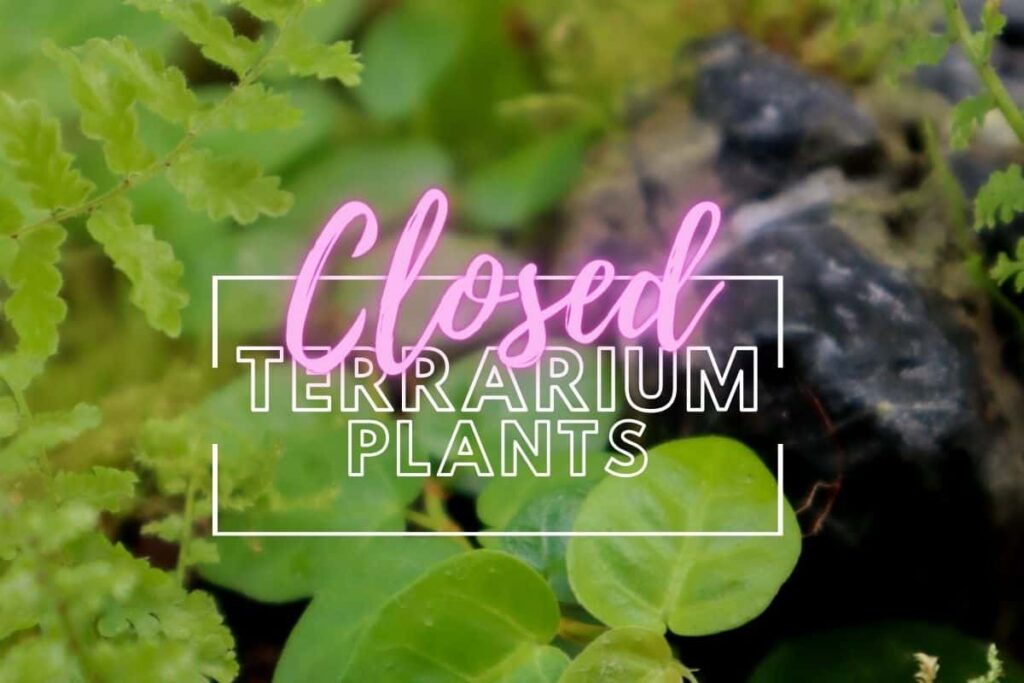
Image Source: Terrarium Tribe
My Polka Dot Plant (Hypoestes phyllostachya) steals the show with its vibrant speckles whenever someone visits my terrarium collection. These plants with their freckled leaves have become my favorite way to add color to closed terrariums.
These tropical beauties do amazingly well in terrarium environments, especially with humidity levels between 50-90% 26. My plants grow best when temperatures stay between 60-80°F 22. The sort of thing I love is how they react to light – they need bright indirect light, and I’ve noticed their signature spots start to fade with too much direct sun.
I’ve had great success growing these varieties in my terrariums:
- ‘Carmina’ with dark green and red-spotted leaves
- ‘Confetti’ featuring white, pink, or burgundy spots
- ‘Pink Brocade’ showcasing mottled pink patterns
- ‘Splash’ series with various color combinations
My plants stay at a perfect size for terrariums, usually growing 10-20 inches tall 27. Regular pruning keeps them looking bushy and full. Pro tip: I pinch back the top two leaves on each stem weekly. This stops them from getting leggy and helps them grow fuller.
These plants need specific watering care – they love consistently moist soil and act quite dramatic when they’re thirsty, drooping quickly to show their displeasure 26. My closed terrariums need less frequent watering because of their natural humidity.
String of Turtles
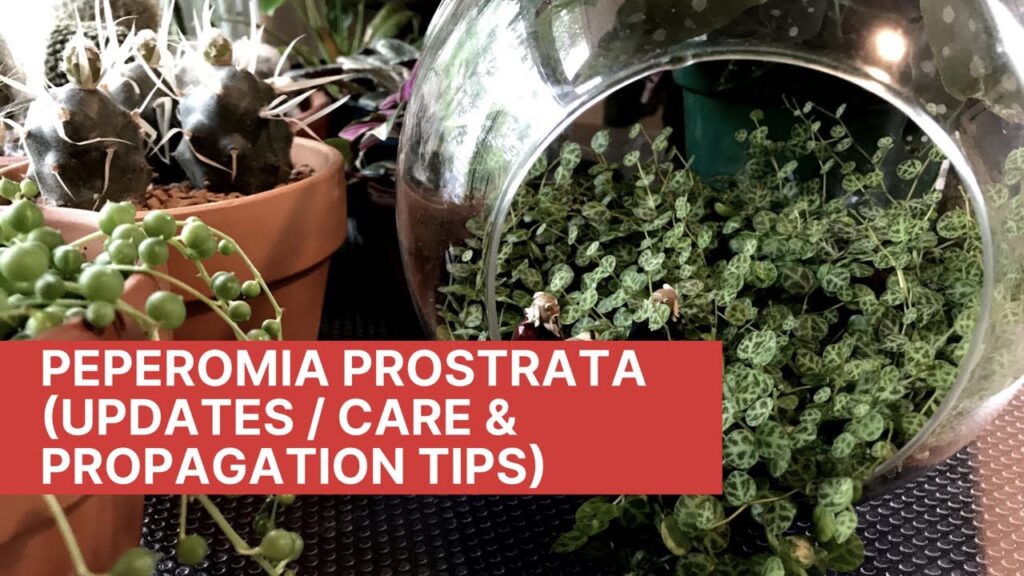
My passion for terrariums led me to fall in love with the String of Turtles (Peperomia prostrata), a beautiful Brazilian native that has reshaped the scene of my closed terrariums into miniature rainforests. The sort of thing I love most about it is how its delicate leaves create intricate patterns that look just like tiny turtle shells flowing down the terrarium walls.
After growing this semi-succulent beauty for several years, I found that there was a sweet spot in temperatures between 65-75°F 28. This plant works perfectly in terrariums because it grows slowly and takes 3-5 years to reach maturity 29. You won’t need to worry about it outgrowing its space.
My experience has helped me nail down these care requirements for the best growth:
- Light: Medium to bright indirect light – direct sun can damage the jelly-like leaf layer 30
- Water: Let the top inch dry between waterings 30
- Humidity: Shows its best colors in high humidity environments
- Soil: Well-draining mix with peat moss helps retain moisture 30
The plant’s watering needs fascinate me. Its succulent-like leaves store water, but it’s actually a rainforest plant rather than a desert dweller 31. Pro tip: Bottom watering works really well because it keeps the leaves dry while giving the shallow roots all the moisture they need 30.
This plant’s ability to adapt to terrarium life amazes me. Many trailing plants can quickly take over, but the String of Turtles stays manageable while creating beautiful cascading effects. The vines can grow up to 12 inches 32, which adds perfect vertical interest to your terrarium’s look.
Moon Valley Pilea

My Moon Valley Pilea (Pilea mollis) stands out in my terrarium collection with its textured surface that looks like a tiny lunar landscape. This compact plant from Central and South America grows to just 12 inches in height 33, which makes it perfect for enclosed spaces.
The plant’s striking foliage sets it apart with bright yellow-green leaves and dark copper veins 33. These deeply dimpled leaves create fascinating shadows in my terrarium and add a depth that flat-leaved plants can’t match.
My experience has shown these growing conditions work best:
- Temperature between 65-75°F 33
- Bright indirect light, avoiding intense direct sun
- Consistently moist soil that’s well-draining 34
- High humidity levels, making it perfect for closed terrariums
Moon Valley Pilea’s adaptability to terrarium life amazes me. The plant thrives in high humidity but handles average home conditions well 33. My plants have grown successfully from stem cuttings that root easily in water or directly in soil 34.
Pro tip: Gray-brown coloring on the leaves usually signals insufficient light or cold conditions 33. A quick move to a brighter spot should fix this issue.
Comparison Table
| Plant Name | Height/Size | Temperature Range | Humidity Requirements | Light Requirements | Key Features |
|---|---|---|---|---|---|
| Miniature Fittonia | 3-6 inches | 60-80°F | 60-90% | Bright indirect | Beautiful leaf veins display white, pink, or red patterns |
| Baby Tears Plant | Not specified | 50-70°F | Min. 75% | Bright filtered | Creates a lush moss-like carpet with easy propagation |
| Peperomia Hope | 8-12 inches tall, spreads 18-24 inches | 65-75°F | 60-80% | Bright indirect | Elegant trailing stems with thick, succulent-like foliage |
| Club Moss | Not specified | 50-75°F | 50-90% | Medium indirect | Resembles a dense fern carpet with ancient-looking features |
| Mini Orchids | Not specified | 65-85°F | 50-70% | Bright indirect | Produces lasting blooms and adapts well to surface mounting |
| Air Plants | Not specified | 50-90°F | Not specified | Bright indirect | Thrives without soil, needs weekly water soaking |
| African Violet Mini | 3-6 inches diameter | 60-80°F | 50-60% | Bright indirect (10+ hours) | Blooms consistently throughout 10-12 months |
| Polka Dot Plant | 10-20 inches | 60-80°F | 50-90% | Bright indirect | Distinctive spotted leaves in multiple colors |
| String of Turtles | Vines up to 12 inches | 65-75°F | High (not specified) | Medium to bright indirect | Leaves showcase turtle shell patterns with gradual growth |
| Moon Valley Pilea | Up to 12 inches | 65-75°F | High (not specified) | Bright indirect | Distinctive leaves feature copper-colored veining |
Conclusion
My trip learning about these 10 terrarium plants has shown that creating a thriving miniature ecosystem doesn’t need a green thumb – just the right plant choices and proper care. Each plant adds its unique charm. Fittonia showcases striking veins, while Moon Valley Pilea features lunar-like textures.
These plants have common traits that make them ideal for enclosed spaces. They stay compact, thrive in humidity, and adapt well to terrarium conditions. My experiments have revealed that success depends on matching each plant’s specific needs with the right spot in your terrarium. Baby Tears creates lush ground cover, and String of Turtles adds beautiful trailing elements.
Creating your first terrarium might seem overwhelming. The simple essentials matter most – proper drainage, appropriate lighting, and consistent moisture levels. You can start with one or two plants from this list that suit your experience level and growing conditions. African Violet Mini or Peperomia Hope work great for beginners. More experienced growers might enjoy the challenge of mini orchids.
These tiny green companions have changed my living space into a slice of nature, and they can do the same for yours. Each terrarium tells a unique story – yours is ready to begin.
FAQs
Q1. What are some of the best plants for terrariums? Some excellent terrarium plants include Nerve Plants (Fittonia), Baby Tears, Peperomia Hope, Club Moss, Mini Orchids, Air Plants, African Violet Mini, Polka Dot Plant, String of Turtles, and Moon Valley Pilea. These plants thrive in high humidity and stay compact, making them ideal for enclosed spaces.
Q2. How many plants should I put in my terrarium? The number of plants depends on the size of your terrarium. For small containers (less than 6 inches in diameter), 1-3 plants are recommended. Larger containers (over 6 inches in diameter) can accommodate 4-5 plants. Remember to consider the growth habits of each plant to avoid overcrowding.
Q3. Which plants work best in a self-sustaining terrarium? For a self-sustaining terrarium, choose slow-growing plants that thrive in high humidity. Good options include Peperomia, Nerve Plants, and live mosses. Avoid plants that require significant airflow or dry conditions, such as succulents, cacti, and air plants.
Q4. How long can a self-sustaining terrarium last? A well-designed self-sustaining terrarium can last for many years. One famous example is David Latimer’s sealed bottle garden, which has been thriving for over 60 years without external intervention. With proper setup and care, your terrarium can create its own miniature ecosystem that lasts for a long time.
Q5. What are the key factors for successful terrarium plant growth? Successful terrarium plant growth depends on several factors: proper drainage, appropriate lighting (usually bright, indirect light), consistent moisture levels, and high humidity. It’s also important to choose plants that are well-suited to terrarium conditions and to avoid overcrowding. Regular maintenance, such as pruning and removing dead foliage, helps keep the terrarium healthy.
